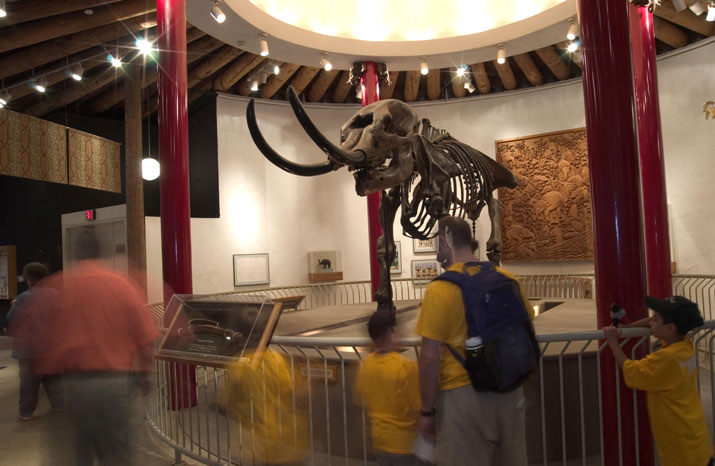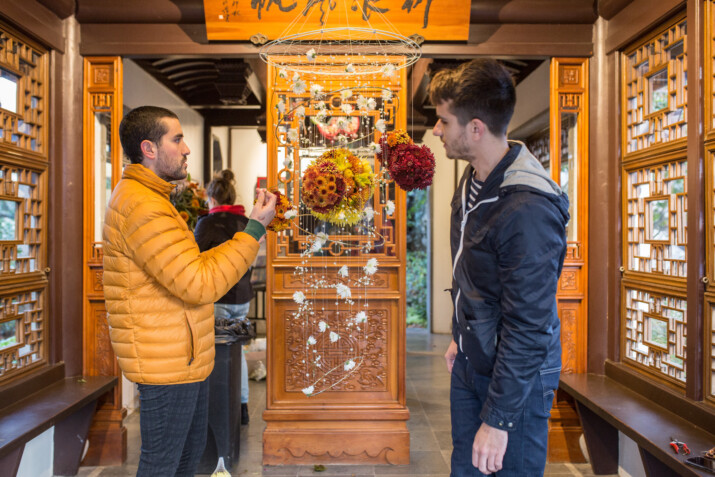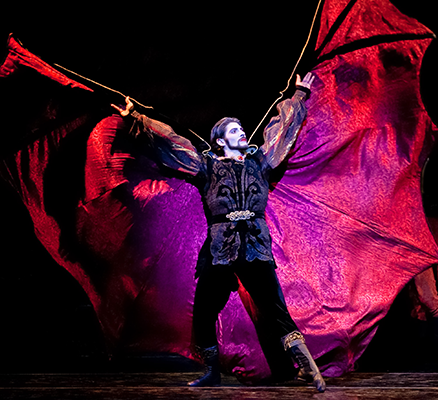
Oregon Zoo’s Mastodon skeleton Heading Back to Smithsonian’s National Museum of Natural History
Portland, January 11th, 2013. The Oregon Zoo’s Lilah Callen Holden Elephant Museum — home to elephant-related art, historical artifacts and a 7,000-year-old fossilized mastodon skeleton — will close its doors for good this month, as the zoo prepares for construction on Elephant Lands, a dramatic expansion of the Asian elephant habitat. Zoogoers wishing to see the museum one last time may visit Jan. 11-21, from 10 a.m. to 4 p.m.
Much of the artwork and many historical artifacts on display at the Elephant Museum will remain at the zoo — some within Forest Hall, the indoor portion of the Elephant Lands habitat — but this month will be the last chance for visitors to experience the museum in its current space.
It will also be the final opportunity to see the museum’s massive mastodon skeleton, on loan from the Smithsonian’s National Museum of Natural History. Later this month, a team of expert vertebrate paleontologists will begin the job of dismantling the fossilized giant, which will be shipped back to its permanent home at the Smithsonian in early February.
The skeleton — an Ice Age relic that stands around 8 feet tall and measures 14 feet from tusk to tail — dates from the late Pleistocene era and is believed to be at least 7,000 years old. It was discovered in 1901 by Levi Wood, who unearthed it from a peat swamp on his farm in southern Michigan. Following an appearance at the 1904 Louisiana Purchase Exposition in St. Louis, the mastodon found a home in the Smithsonian’s newly opened “Hall of Extinct Monsters” in 1910, remaining there for more than 50 years until a 1963 museum renovation. The last time the skeleton was moved was in 1986 for the opening of the zoo’s Elephant Museum.
Other items of interest at the Elephant Museum include:
- · An etching of an elephant skull by well-known English artist Henry Moore.
- · “Animal Alphabet,” a 1973 work by Henk Pander (the celebrated Dutch-born painter has been a Portland resident since 1965).
- · “Mammoths,” a print by prominent Northwest artist Tom Hardy. Hardy’s bronze sculpture “Wooly Mammoths” is also featured, mounted on an exterior wall just outside the museum’s exit.
- · A pencil-and-ink drawing of African elephants by Kamante, friend and major domo to writer Isak Dinesen during her years in Kenya.
- · A kinetic wire elephant sculpture by artist Steve Clisby (donated by the Girl Scouts in 1983).
- · Memorabilia from the time of Packy’s birth in 1962.
Since opening in December 1986, the Lilah Callen Holden Elephant Museum has been dedicated to the acquisition, preservation, interpretation and exhibition of materials related to elephants and their relationship with humans.
The brainchild of former zoo director Warren Iliff, the museum was named in memory of Lilah Callen Holden, a long-time elephant lover and friend of Iliff’s, who died in 1983. The Holden Family has been the museum’s champion for more than a quarter of a century.
“Exhibit themes naturally change over time, and the bulk of this collection was acquired for illuminating themes deemed important at the time of the grand opening,” said Rebecca Patchett, museum collection coordinator. “Items exhibited in Forest Hall will provide an overview of how elephants have interacted with and inspired humans across the globe and tell the story of the strong bond between the Portland community and the Oregon Zoo’s herd.”
After taking in the Elephant Museum’s historic and prehistoric sights, weekend visitors can also get a glimpse into the near future. Zoo volunteers will be at the museum Jan. 11-13 and Jan. 19-21, from 11 a.m. to 3 p.m., to help explain the transformations to come with the Elephant Lands, which will quadruple the space and enhance daily experiences for the zoo’s elephants — including Lily, the newest addition to the herd. Visitors to the museum during these hours may pick up a complimentary pair of pink elephant ears (while supplies last) commemorating the Nov. 30 birth of Lily, and perhaps get a look at the 6-week-old romping in one of the outside sand yards of the nearby elephant habitat.
The zoo’s elephant care team reports Lily’s integration into the herd is progressing so well that there will no longer be set hours with Lily and Rose-Tu in the indoor viewing room. Lily and her mother may be outside with the rest of the herd or in the viewing room on any given day. Either way, indoor viewing will be open until 3 p.m.
The zoo is a service of Metro and is dedicated to its mission of inspiring the community to create a better future for wildlife. Committed to conservation, the zoo is currently working to save endangered California condors, Oregon silverspot and Taylor’s checkerspot butterflies, western pond turtles and Oregon spotted frogs. Other projects include studies on Asian elephants, polar bears, orangutans and giant pandas. The zoo relies in part on community support through donations to the Oregon Zoo Foundation to undertake these and many other animal welfare, education and sustainability programs.
The zoo opens at 10 a.m. daily and is located five minutes from downtown Portland, just off Highway 26. The zoo is also accessible by MAX light rail line. Visitors who travel to the zoo via MAX receive $1.50 off zoo admission. Call TriMet Customer Service, 503-238-RIDE (7433), or visit www.trimet.org for fare and route information.
General zoo admission is $10.50 (ages 12-64), $9 for seniors (65 and up), $7.50 for children (ages 3-11) and free for those 2 and younger; 25 cents of the admission price helps fund regional conservation projects through the zoo’s Future for Wildlife program. A parking fee of $4 per car is also required. Additional information is available at www.oregonzoo.org or by calling 503-226-1561.















